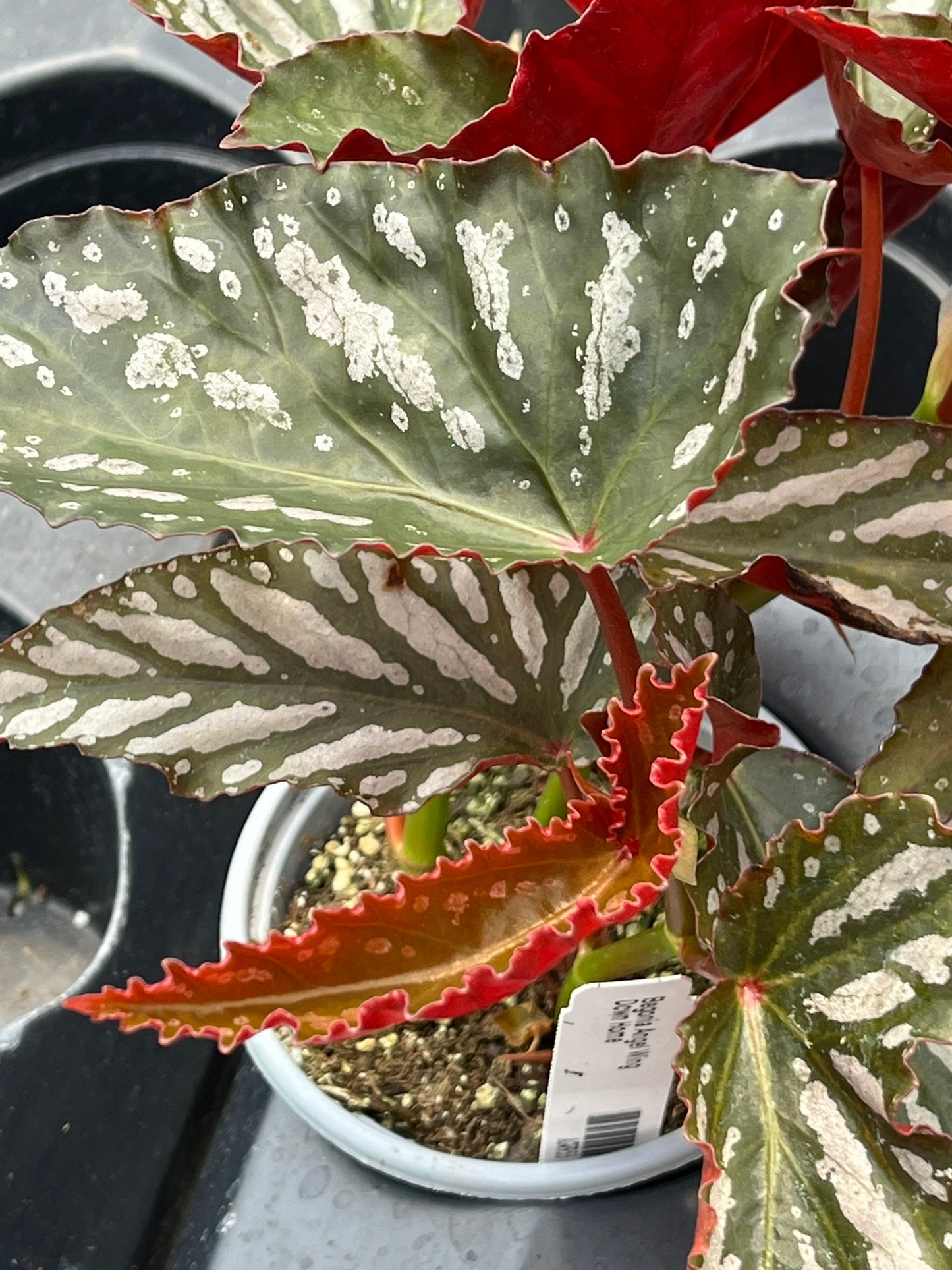Plant Hoarder
Begonia Down Home
Begonia Down Home
Couldn't load pickup availability
Share
Hardiness Zone:9
Sun Exposure:Part Sun, Mostly Shade and Shade
Begonia ‘Down Home’: Southern Charm in Bloom
A Warm, Welcoming, and Easy-to-Grow Beauty for Shade Gardens and Porches Alike
Begonia ‘Down Home’ is exactly what the name promises—comfort, charm, and a graceful presence that makes any space feel welcoming. With rich foliage, soft blooms, and an easy-going attitude, this begonia captures the heart of Southern gardening. It brings life to porches, patios, and shade gardens without fuss or demands.
Whether you’re a seasoned gardener or just getting started, ‘Down Home’ will quickly become a favorite. It’s easy to grow, incredibly versatile, and practically glows with personality.
Let’s take a closer look at how to grow, care for, and fall in love with Begonia ‘Down Home’.
What Makes ‘Down Home’ So Special?
This begonia is a true charmer. You’ll recognize it instantly by its lush, textured leaves, its tender pink flowers, and a growth habit that’s both bushy and tidy.
Here’s why it’s a standout:
-
Rich Foliage: Deep green leaves, often edged in bronze or burgundy, give this plant a rich, full appearance.
-
Delicate Blooms: The flowers are soft, warm, and inviting—usually in shades of pink or blush that flutter gently above the foliage.
-
Classic Appeal: It has that nostalgic feel of an old porch garden or a grandmother’s shade bed, but with all the easy care of modern varieties.
-
Flexible Use: Grow it in containers, hanging baskets, garden borders, or window boxes.
It feels personal. It feels friendly. It feels like home.
How to Grow Begonia ‘Down Home’
Growing this begonia is simple. It’s forgiving, fast-growing, and doesn’t require a green thumb—just a bit of attention and love.
1. Light Requirements
‘Down Home’ thrives in partial to full shade. It appreciates bright, indirect light, especially in the morning, but doesn’t like harsh afternoon sun. Too much direct sunlight can burn the leaves and fade the colors.
Outdoors: Filtered shade under trees, on shaded porches, or tucked against a north-facing wall.
Indoors: A spot near a bright window, protected by sheer curtains or blinds.
Think soft light. Like what you’d find under a dogwood or magnolia tree.
2. Soil and Potting Mix
This begonia needs light, well-draining soil. If you’re planting in a pot, choose a good-quality peat-based mix or make your own.
DIY Mix for Success:
-
2 parts peat moss or coco coir
-
1 part perlite or vermiculite
-
1 part compost or pine bark
The goal? Keep it moist but not soggy. Soggy roots are the enemy.
3. Watering
Water when the top inch of soil feels dry. It prefers evenly moist soil, but not standing water. Let the water run out of the drainage holes, then empty the saucer.
Tips for Best Watering:
-
Water at the base—avoid wetting the leaves
-
Reduce watering in winter if grown indoors
-
Use room-temperature water to avoid shocking the roots
4. Humidity and Temperature
Begonia ‘Down Home’ loves warmth and humidity. It grows best between 60–80°F (15–27°C) and appreciates humidity levels around 50% or higher.
Indoors: Use a small humidifier or group it with other plants to boost moisture.
Outdoors: It thrives in the warm, humid air of the South or during a warm summer season elsewhere.
Avoid: Drafty windows, air conditioners, or sudden cold snaps.
Feeding and Fertilizing
Like many flowering plants, this begonia loves to eat—just not too much at once.
Use a balanced, water-soluble fertilizer (like 10-10-10) every 2–4 weeks during the growing season.
-
Fertilize in spring through early fall
-
Stop feeding in winter when growth slows
-
For extra blooms, try a bloom booster once a month
Pruning and Care
Begonia ‘Down Home’ stays fairly compact, but you can encourage even more lushness with a little pruning.
-
Pinch off growing tips to promote bushiness
-
Remove yellow or damaged leaves regularly
-
Snip spent blooms to keep it tidy and blooming
Want more plants? The cuttings root easily in water or moist soil!
Growing Options: Pots, Baskets, or Beds
This is a begonia that works anywhere.
In Pots
Perfect for porches, patios, and indoor décor. Use breathable containers with drainage and rotate for even growth.
In Hanging Baskets
The slightly trailing growth and layered leaves look stunning in a basket, especially when flowers spill gently over the edges.
In Garden Beds
In Zones 9–11, you can grow it as a perennial. In cooler zones, enjoy it as an annual or dig it up and overwinter indoors.
Overwintering Indoors
Want to keep your ‘Down Home’ going year after year? You can!
-
Bring inside before first frost
-
Cut back leggy stems
-
Place in a bright indoor spot
-
Water lightly—just enough to keep it going
-
Hold off on fertilizer until spring
Expect a little leaf drop while it adjusts. It’s normal.
Troubleshooting: Quick Fixes for Common Problems
Even the best-behaved begonias have off days. Here’s how to handle the most common issues:
-
Yellowing Leaves: Usually from overwatering or poor drainage. Let the soil dry out slightly and check the roots.
-
Brown Leaf Tips: Often caused by dry air or inconsistent watering. Boost humidity and water evenly.
-
Drooping Stems: Could mean it’s too dry—or too wet. Check the soil before watering.
-
No Flowers? Try giving it more light or switching to a low-nitrogen, bloom-focused fertilizer.
-
Pests (like mealybugs or mites): Wipe leaves with a damp cloth or spray with diluted neem oil.
Why You’ll Love Begonia ‘Down Home’
This is more than just a beautiful plant. It’s a feeling. A touch of comfort. A reminder of porch swings, warm afternoons, and that easy pace of life we all crave.
Here’s what makes it special:
-
Easy to grow and forgiving
-
Grows well indoors or out
-
Brings color to shaded areas
-
Blooms over a long season
-
Full of charm, warmth, and personality
Begonia ‘Down Home’ is the kind of plant that quietly fills a space with life and grace. It’s soft, warm, and completely at ease—just like your favorite quilt or that old rocking chair on the front porch.
If your garden needs a little comfort, a little color, and a whole lot of heart, then welcome ‘Down Home’ into your world. You’ll be glad you did.


